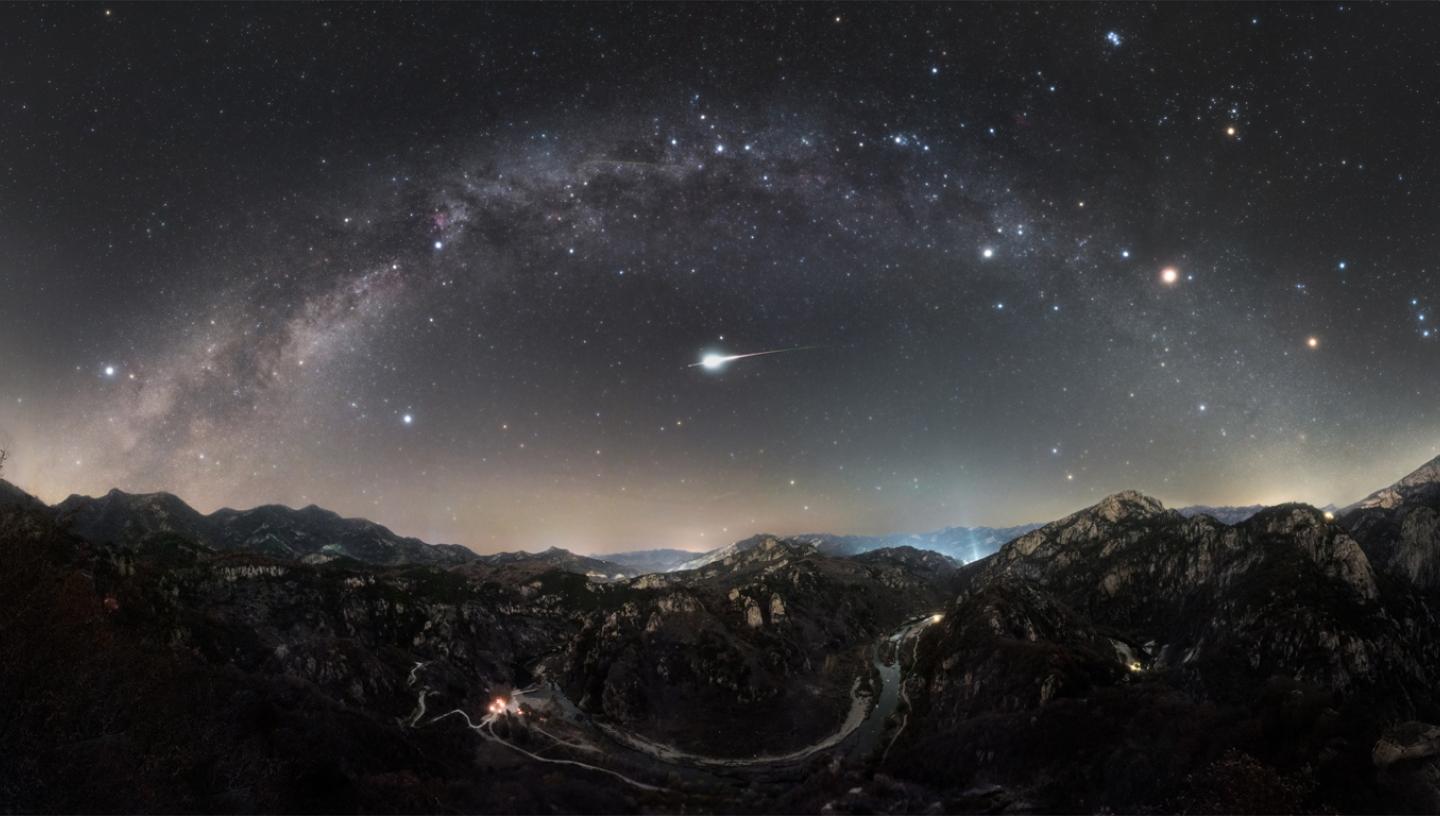
The Orionid meteor shower is one of the best known and most reliable meteor showers in the annual calendar, visible from across the globe.
In 2025 the Orionid meteor shower is active from 2 October - 7 November and will peak on the night of 22 October between midnight and dawn. However, you should be able to see the shower for several days on either side of this 'maximum' date.
What is the Orionid meteor shower?
Some people view the Orionids as extra special as the meteors are actually pieces of Comet 1P/Halley, famously known as Halley's Comet. The comet swings by the earth only once every 75-76 years but this annual shower provides some compensation for those who may miss that once-in-a-lifetime event.
As the comet follows its path around the sun, it leaves a path of tiny debris. The cometary debris enters our planet’s atmosphere at speeds of around 41 miles per second and vaporises from friction with the air, which causes the streaks of light we call meteors.
Find out the difference between an asteroid, a comet, a meteor, and a meteorite.
When is the Orionid meteor shower?
The Orionids occur in late October each year with a peak around the 21st. Although the Orionid maximum is quoted as 22 October in 2025, in fact there is a broad maximum lasting about a week roughly centered on that date.
| SHOWER NAME | DATE OF MAXIMUM | NORMAL LIMITS | RATE/HOUR | DESCRIPTION |
|---|---|---|---|---|
| Orionids | 22 October | 2 October - 7 November | 15 | Fast with fine trains. Associated with Comet Halley |
Find out more about other meteors and meteorites around the year
How can I watch the Orionid meteor shower?
Hunting for meteors, like the rest of astronomy, is a waiting game, so it's best to bring a comfy chair to sit on and to wrap up warm as you could be outside for a while. They can be seen with the naked eye so there's no need for binoculars or a telescope, though you will need to allow your eyes to adjust to the dark.
In 2025 the Moon will be new on 21 October, coinciding with the shower's peak lasting a week around 22 October, meaning the skies will be nice and dark to spot the best of the Orionids.
Where is best to watch the Orionid meteor shower?
For the best conditions, you want to find a safe location away from street lights and other sources of light pollution.
The meteors can be seen in all parts of the sky, so it’s good to be in a wide open space where you can scan the night sky with your eyes. But if you trace the paths that the meteors take, they seem to originate from the constellation of Orion.
If you manage to get any pictures of the Orionid meteor shower then we'd love to see them. You can find us on Facebook or Twitter.
"For once I was in the right place at the right time"
See more incredible photos like Rob's at the Astronomy Photographer of the Year exhibition.
Orionid meteor shower facts
- If you trace the path that the Orionid meteors take, they seem to originate from a point in the constellation of Orion - hence the name.
- The beautiful streaks we see in the night sky can actually be caused by particles as small as a grain of sand!
- The cometary debris enters our planet’s atmosphere at speeds of around 41 miles per second.
Main image: Autumn Milky Way Arc and an Orion Bolide by Chunlin Liu, shortlisted in Astronomy Photographer of the Year 2023


